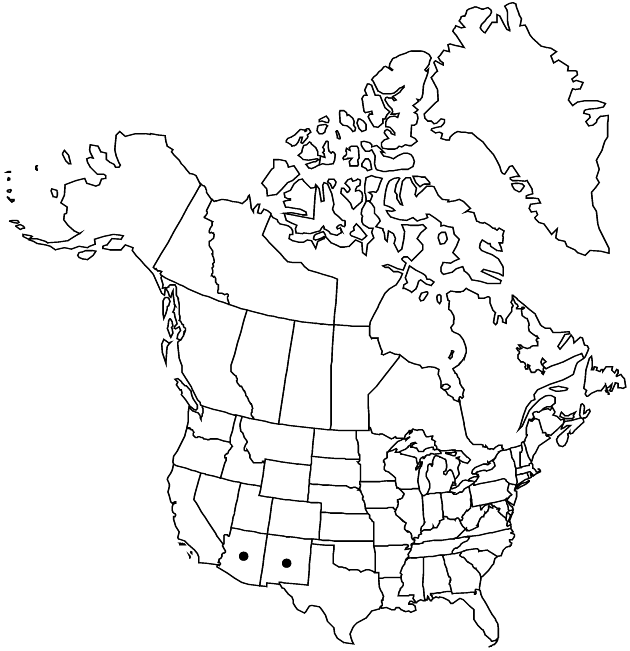Cirsium ochrocentrum var. martinii
Sida 21: 215. 2004.
Common names: Martin’s thistle
Basionym: Cirsium ochrocentrum subsp. martinii Barlow-Irick Novon 9: 320, fig. 2. 1999
Treatment appears in FNA Volume 19. Treatment on page 123.
Stems leafy, nodes usually well separated. Leaves: distal cauline bases clasping, or if decurrent, spiny wings usually less than 1 cm. Corollas red, pink, or reddish purple (rarely white). 2n = 30, 31, 32, 34.
Phenology: Flowering spring–autumn (May–Sep).
Habitat: Desert grasslands, arid shrublands, pine-, oak-, juniper-, or mesquite-dominated woodlands, often in disturbed areas, grassy slopes in montane pine forests
Elevation: 1300–2200 m
Distribution

Ariz., N.Mex., Mexico (Chihuahua), Mexico (Coahuila), Mexico (Sonora), Mexico (Durango)
Discussion
Variety martinii occurs from east-central and southeastern Arizona to western New Mexico and is scattered southward into north-central Mexico.
Selected References
None.
Lower Taxa
None.
"fine" is not a number.
... more about "Cirsium ochrocentrum var. martinii"
outer +
white-tomentose +
gray-tomentose +
short-tailed +
introrse +
connate +
innermost +
rounded;acute +
scarious +
linear-oblong +
colored +
narrow +
hirsute +
papillate +
angled +
continuous +
winged-petiolate +
absent +
appressed +
undulate;oblong;narrowly elliptic +
ascending +
absent +
hairy +
few +
barbellate +
many +
coarse +
absent +
Martin’s thistle +
actinomorphic +
bilateral +
monomorphic +
not ribbed +
light-brown +
glabrous +
6mm;9mm +
decurrent +
reduced +
spine-tipped +
straight +
eglandular +
green +
distinct +
expanded +
proximal +
25;200 +
bisexual +
dispersed +
Desert grasslands, arid shrublands, pine-, oak-, juniper-, or mesquite-dominated woodlands, often in disturbed areas, grassy slopes in montane pine forests +
discoid +
singly +
indeterminate +
terminal +
1;few +
homogamous +
flexuous +
surrounding +
ovoid;hemispheric or broadly campanulate +
smaller +
bristly-dentate +
alternate +
bristle-tipped +
spaced +
spreading +
triangular +
? (?) +
yellowish +
revolute +
scarious +
separated +
later +
2-carpellate +
inferior +
attached +
anatropous +
persistent +
usually noticeably shorter +
falling +
tough +
thick +
absent +
connate +
imbricate +
persistent +
distinct +
herbaceous +
many +
weakly to strongly +
connate +
stigmatic +
reduced +
Sida +
2004 +
absent +
epaleate +
flat;convex +
glutinous +
narrow +
fibrous +
tawny;white +
exalbuminous +
modifed +
5;10 +
subequal +
spreading +
alternate +
leafy +
gray-tomentose +
2-branched +
ringed +
enlarged +
elongate +
Cirsium ochrocentrum var. martinii +
Cirsium ochrocentrum +
variety +
cylindric +
expanded +
dentate +
bristly-dentate to coarsely +
non-septate +
long +
bent +
perennial +
appressed +
middle +